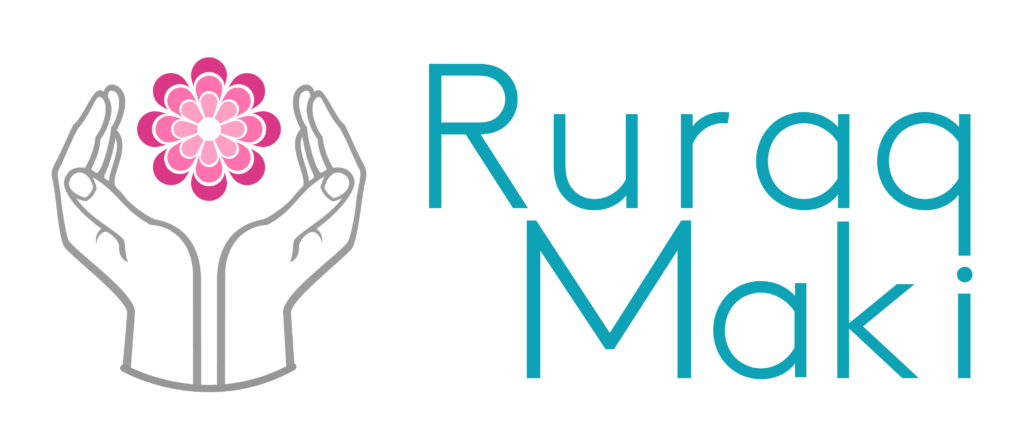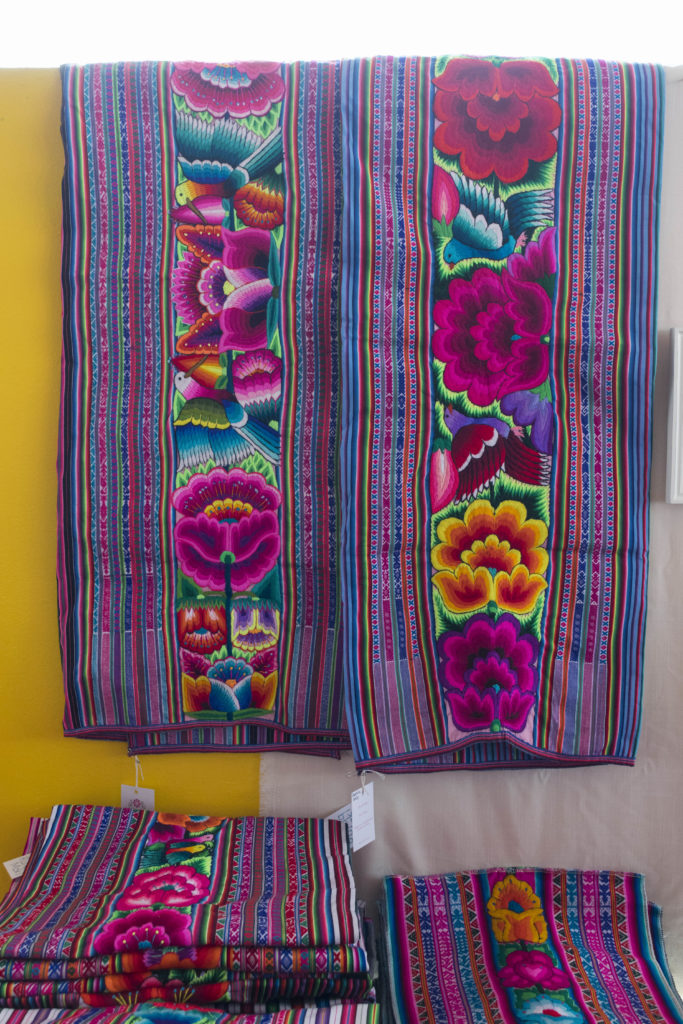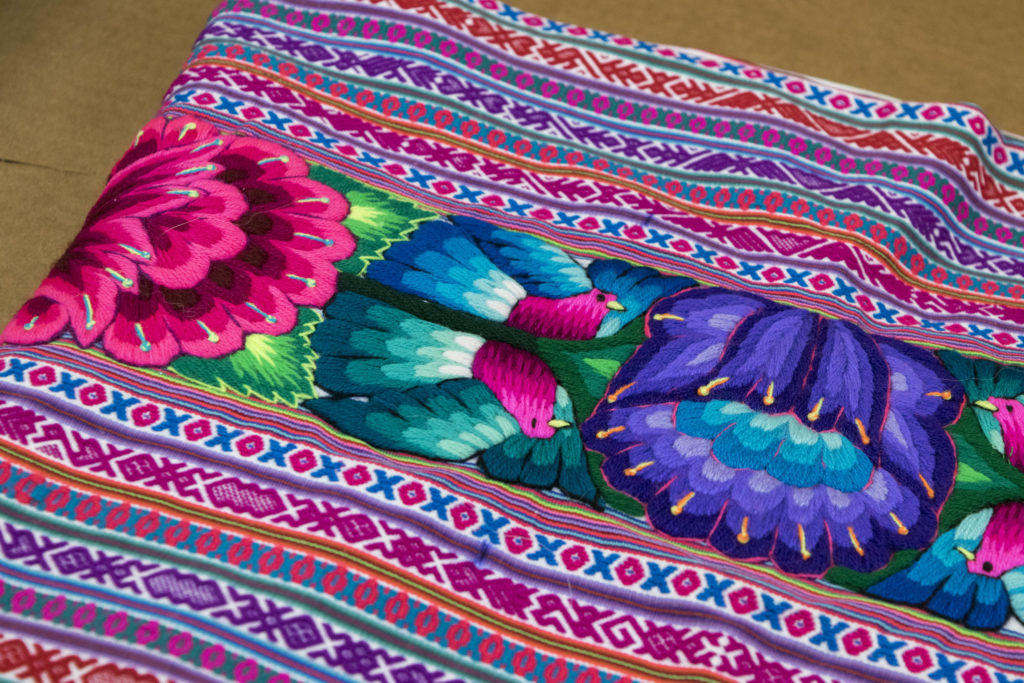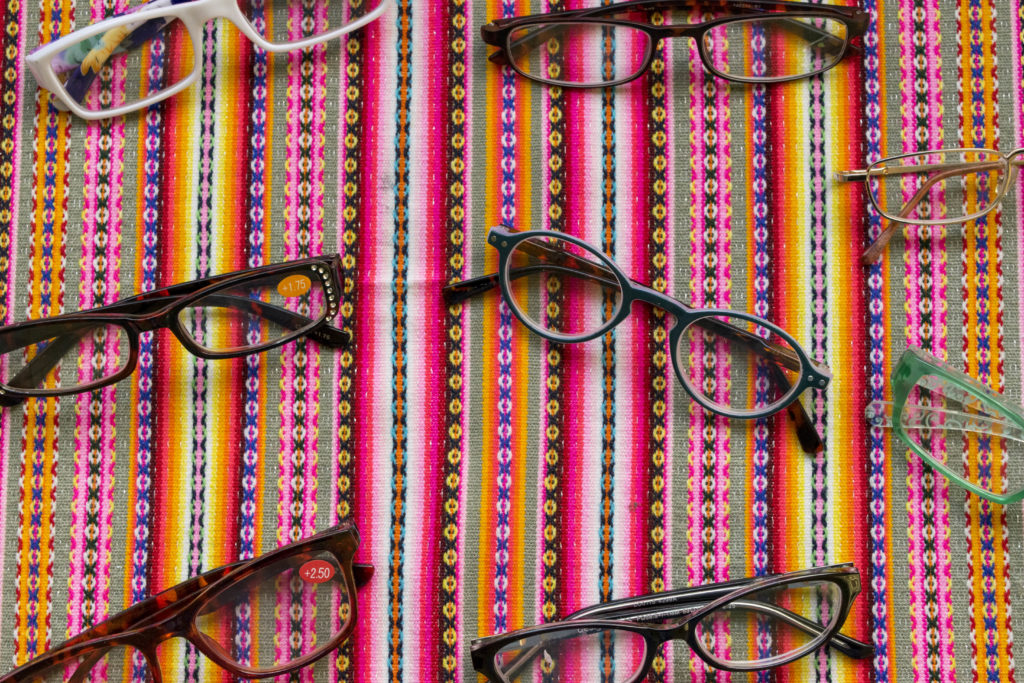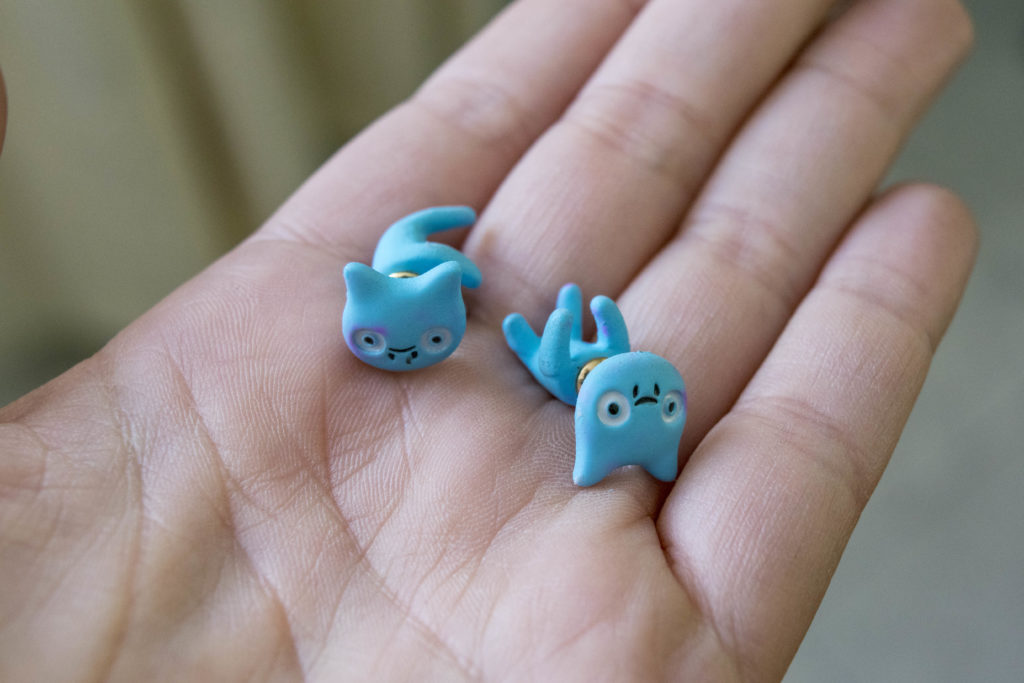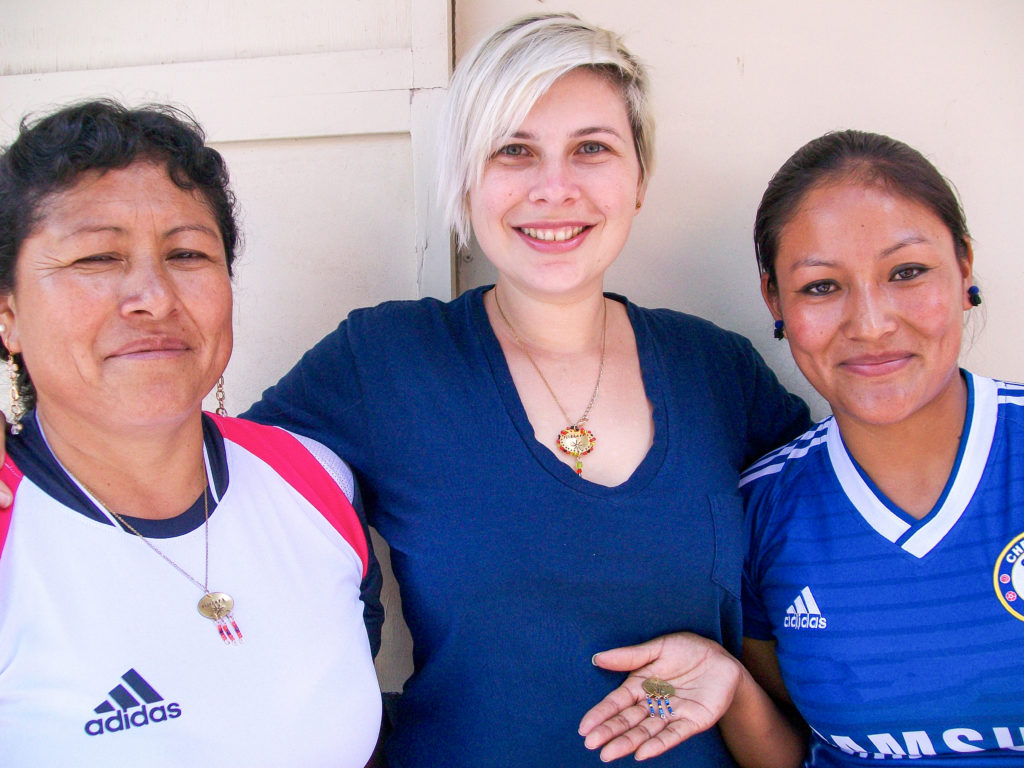In the past several days I’ve spoken a lot about the International Folk Art Market in Santa Fe, yet I haven’t yet posted a formal recap on this blog. Today is that recap!
The Folk Art Market was an incredible experience, both at an organizational level and in regards to the potential for the women’s reach. I was accompanied by two volunteers, Vrnda, who is a member of our Board, and Micah, who is a close friend and long time supporter of Ruraq Maki.
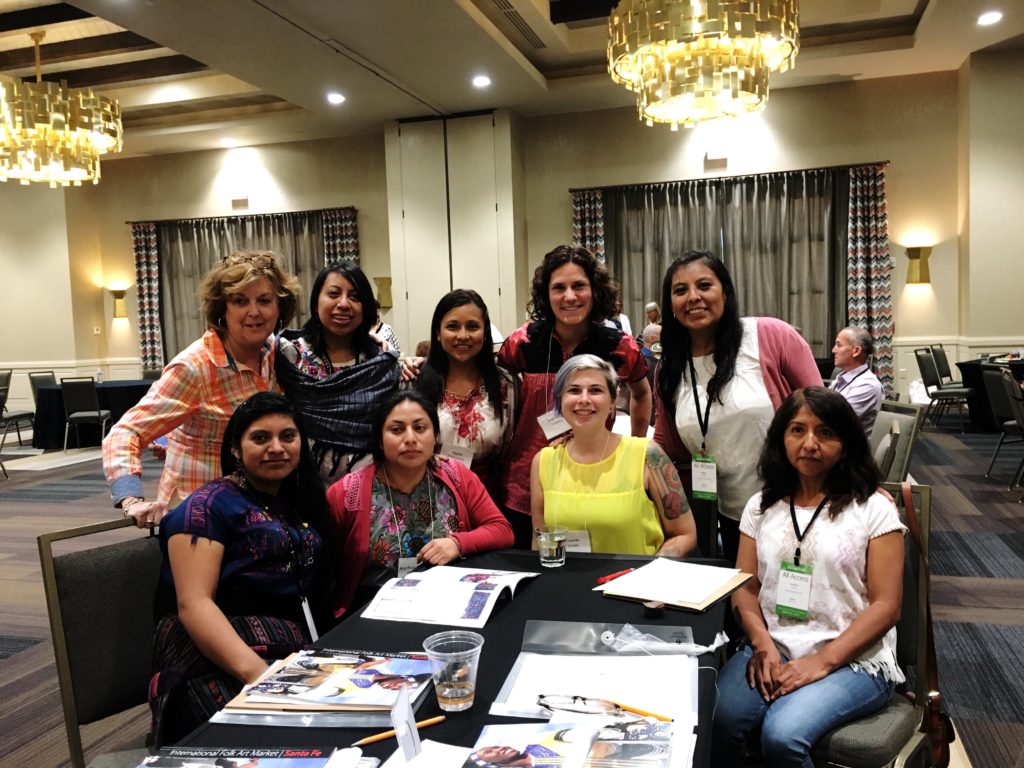
New friends at the workshops
I arrived in Santa Fe on Tuesday and attended a mandatory first-time artisan training on Wednesday, which focused on the the logistics of the market, tips for selling products, and networking with other artisans. On Thursday I attended an optional training that was sponsored by the knowledgable folks at By Hand Consulting. I participated in the track that focused on selling to a wholesale market, including exploring different types of markets, wholesale cost structures, and financial planning for wholesale relationships. Both days of training were extremely helpful for our long-term planning and will enable us to build strong wholesale relationships.
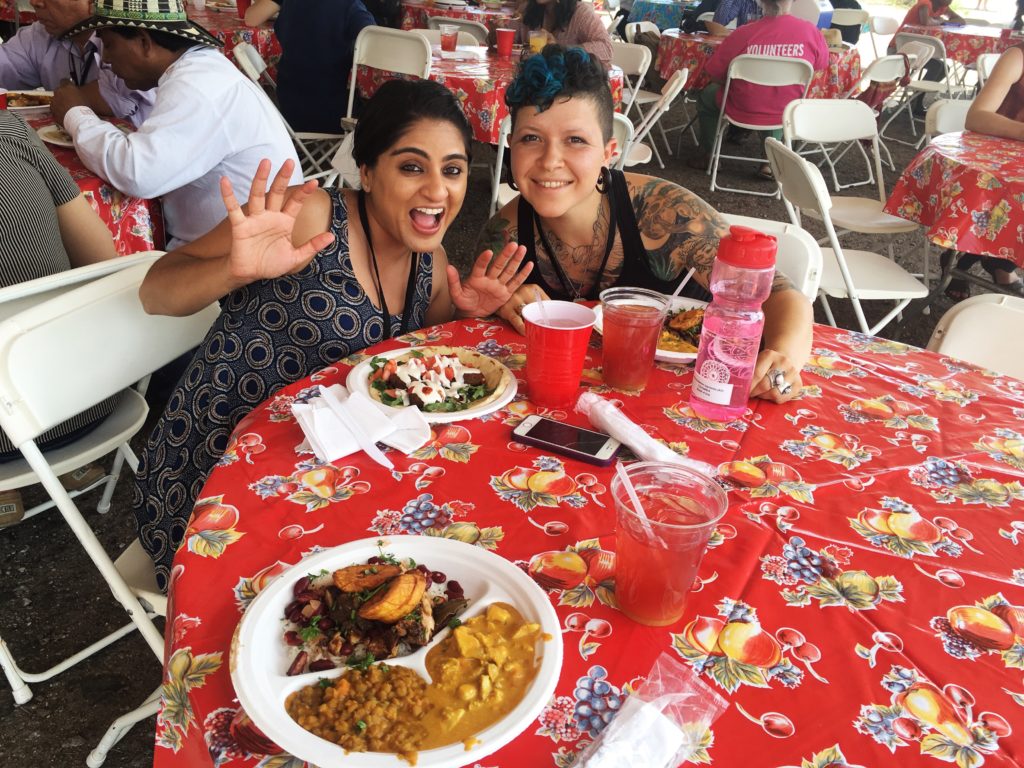
Vrnda and Micah after a long day of set up
On Friday, Micah, Vrnda, and I spent the day setting up our booth and tagging our products. We also got to know our booth mates, Magdalena (joined by her husband Raul), who is a master sculptor from Oaxaca. Friday night was the first night of the market and is for people who are art collectors and enthusiasts (the entrance fee on Friday is $225). For us, Friday night was not our market, as our products are more for the general public, however, it was amazing to walk through the market and view the work of over 160 artisans from about the world.
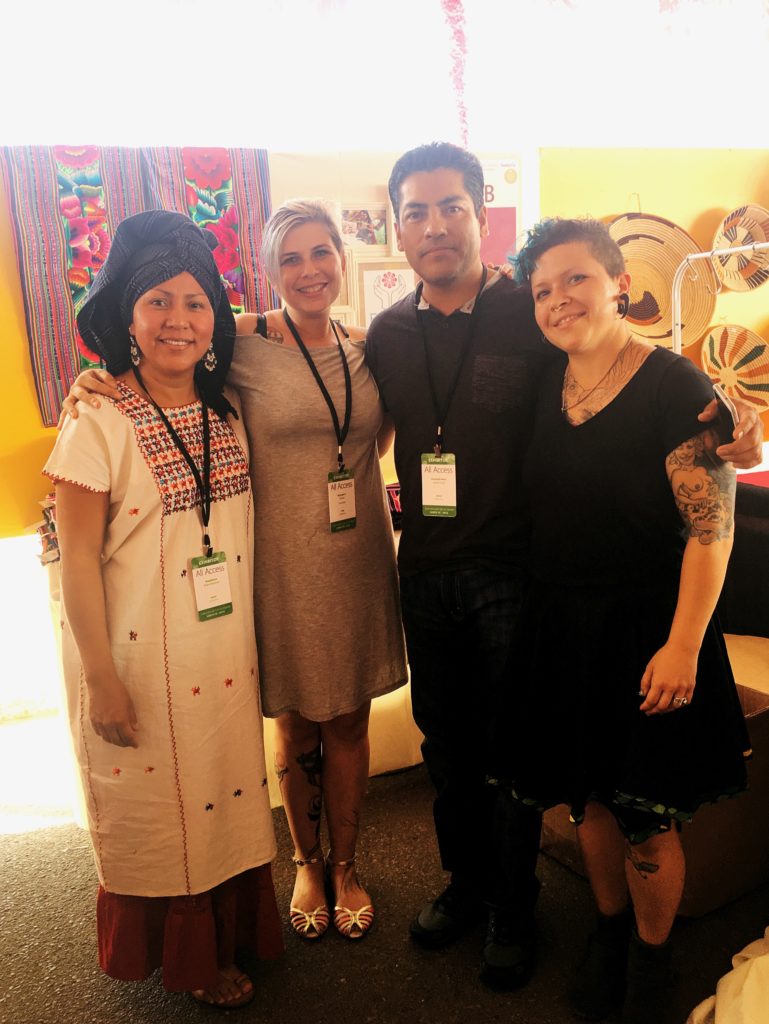
Our booth mates, Magdalenda and Raul
Saturday and Sunday the market is more accessible for the general public and our sales picked up. These days were a great learning experience for us because we learned more about the customers at the market and what they are looking for. Most notably, we learned the ideal price points for products and what types of products people prefer. For us, that meant bags! We sold a lot of bags, sold out of one color of our bags, and almost sold out of one style! This information is valuable because it enables us to focus our efforts and resources on our best selling items.

Our manta display
Overall, our sales were less than we had hoped for but the most we have ever had in one event, by far. More valuable than money, though, is what we learned from the fair, which could otherwise have taken years to figure out.
Also, there were other valuable non-monetary benefits from the event! One was the workshops. Another was that Ruraq Maki was selected by the Folk Art Alliance to be interviewed on film and receive a professional copy of the interview. This video is a gift to us that we can use for anything we choose. For us, this is a tremendous gift, as non-profit videos often cost upwards of $1,000 to produce, and we can utilize this video to help us sell the women’s products.
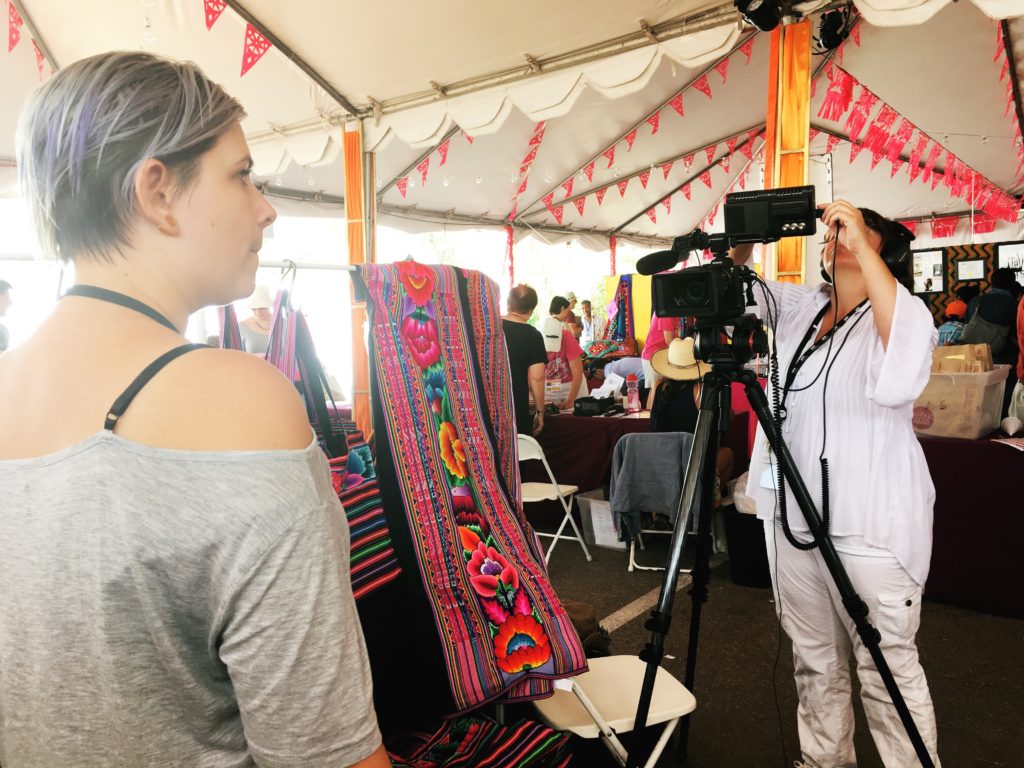
Being interviewed for a video!
Another benefit of the event is that we did connect with wholesale buyers, some of whom purchased samples of our products. For us, this is the start of building wholesale relationships which can propel the women’s work to the next level.
Finally, the most invaluable part of the event was meeting the other artisans and seeing their masterful art. The International Folk Art Market truly is an international community and we were so honored to be apart of it.
